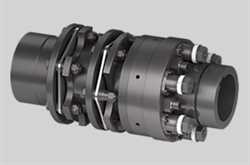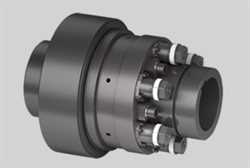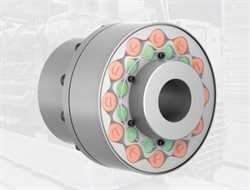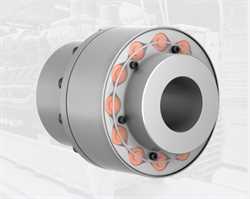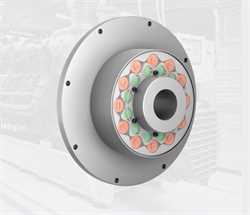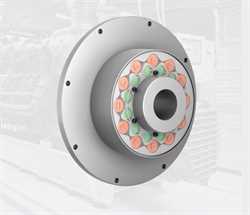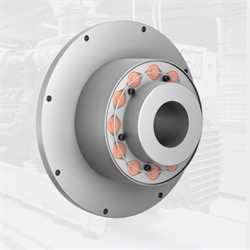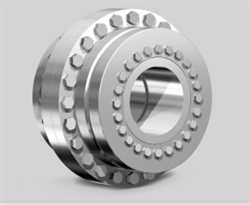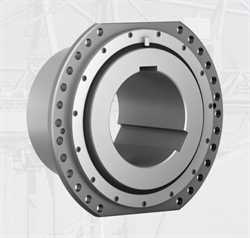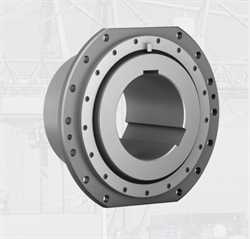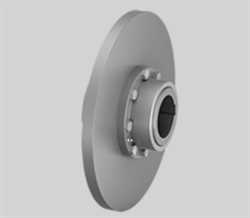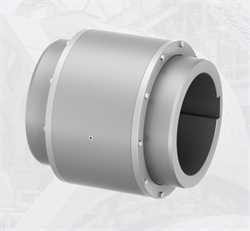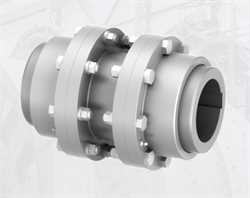Ringfeder TNZ ZCAK/ZCBK Gear Coupling
BRAND : Ringfeder
Type with limited end ?oat
The double cardanic versions
Details
Type with limited end ?oat
The double cardanic versions RINGFEDER® TNZ ZCAK and RINGFEDER® TNZ ZCBK are equipped with a limitation of the end float. The limitation of the end float serves to axially locate a shaft that is mounted on sleeve bearings. he rotor of an electric motor with sleeve bearings can thus be aligned within a desired tolerance range via the coupling to the bearing of the driven machine, so that the rotor remains at its magnetic centre during acceleration of the driving machine. The limitation of the end float constrains the ability to compensate for angular and radial shaft misalignments. In contrast to the TNZ ZCAK with integrated O-ring, the TNZ ZCBK has screwed-on, separate O-ring supports.
Characteristics
General features
- Torsionally rigid gear coupling made of high-quality steel
- Very compact design results in a high-power density
- Compensates for angular, radial and axial shaft offset
- Suitable for use in temperatures up to +120 °C if special seals are used
- Available with split sleeve (ZCA / ZCB - ZCA model range also available in ZCB design) and single-piece sleeve (ZCH)
- The elastic O-Ring can be replaced without having to move the coupled machines
- Bores up to 270 mm
- Torques up to TKn = 195,000 Nm / TKmax = 390,000 Nm
- Speeds up to nmax = 6,000 rpm
General description
The RINGFEDER® TNZ coupling is a torsionally rigid twin cardanic gear coupling.
Toothing
The coupling housings have a straight internal toothing whilst the hubs have an external toothing with a chased variable radius. As a result, the hubs can move spatially within the housing and thus compensate angular, radial and axial shaft misalignment of the adjoined shaft ends within specified tolerances. Depending on coupling type and size, the standard toothing permits an angular misalignment of up to 0.5 degrees per toothing-plane and an axial movement of several millimetres. The max. possible radial shaft displacement is dependent on the distance between the two toothing planes. Other toothing geometries can be used for further specific applications.
Materials
High-grade tooth profiles and grease with ultra high-pressure additives guarantee low-restoring forces and a long serviceable life. The material used is forged steel with an apparent yielding point of at least 335 N/mm2. Special materials can be used for further specific applications. Sealing is carried out using O-Rings of synthetic rubber. The housings are centred and held together by fit-bolts and self-locking nuts.
Temperature
The use of special seals permits the temperature limit to be raised to 120 °C.
Balance
At peripheral speeds upwards of 30 m/s it is advisable to dynamically balance the coupling.
Special applications
If greater misalignments are anticipated at higher speeds and torques, an examination is necessary, performed with the assistance of a special computing programme. This is independent of the determined size. The value TKmax may not be exceeded in any state of operation (start-up, electrical short circuit, blocking, etc.).
Tolerances and standards
The bore tolerance is ISO H7, if not differently ordered. The bore diameters listed refer to keyways to DIN 6885-1 with wide toleranz ISO P9.

